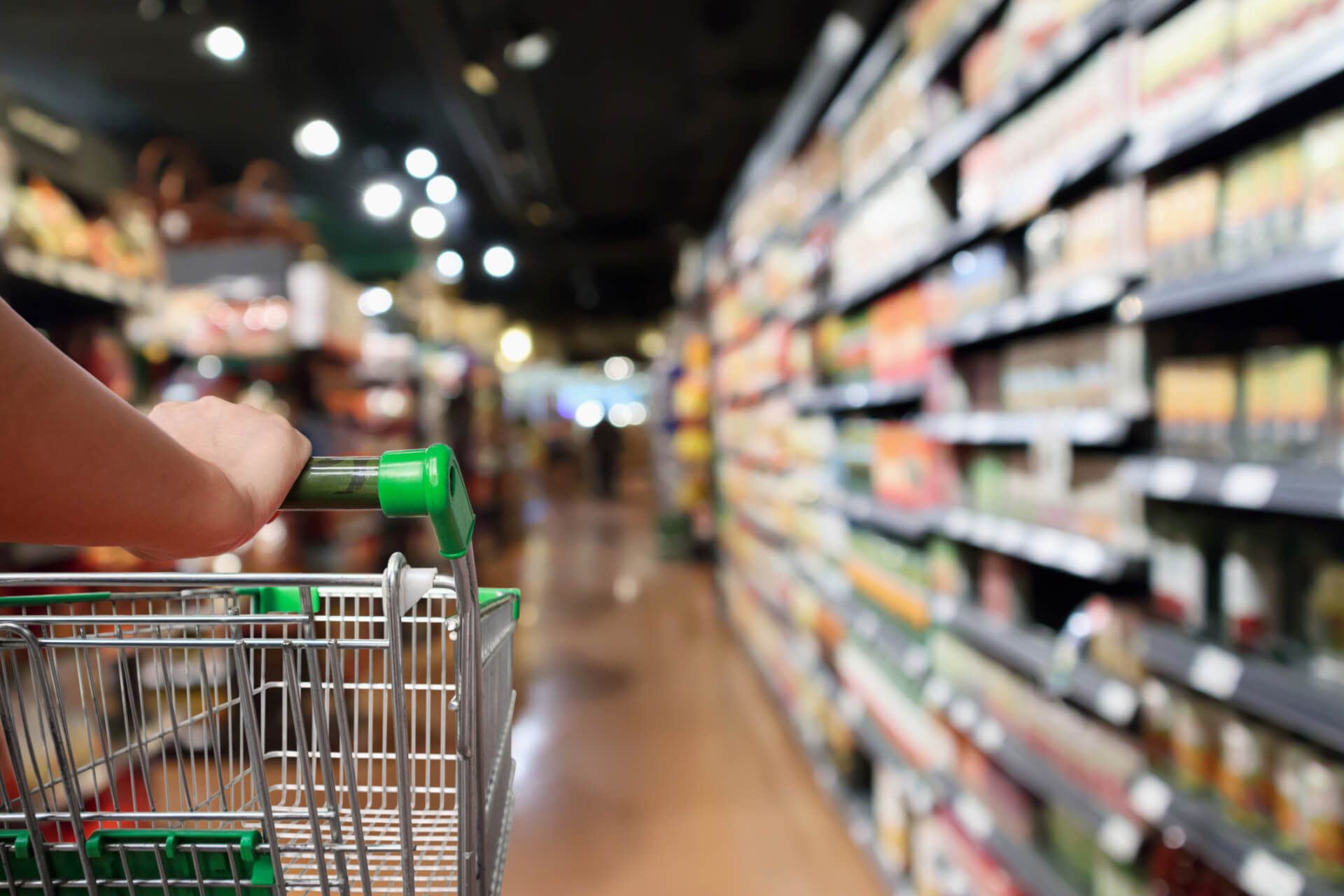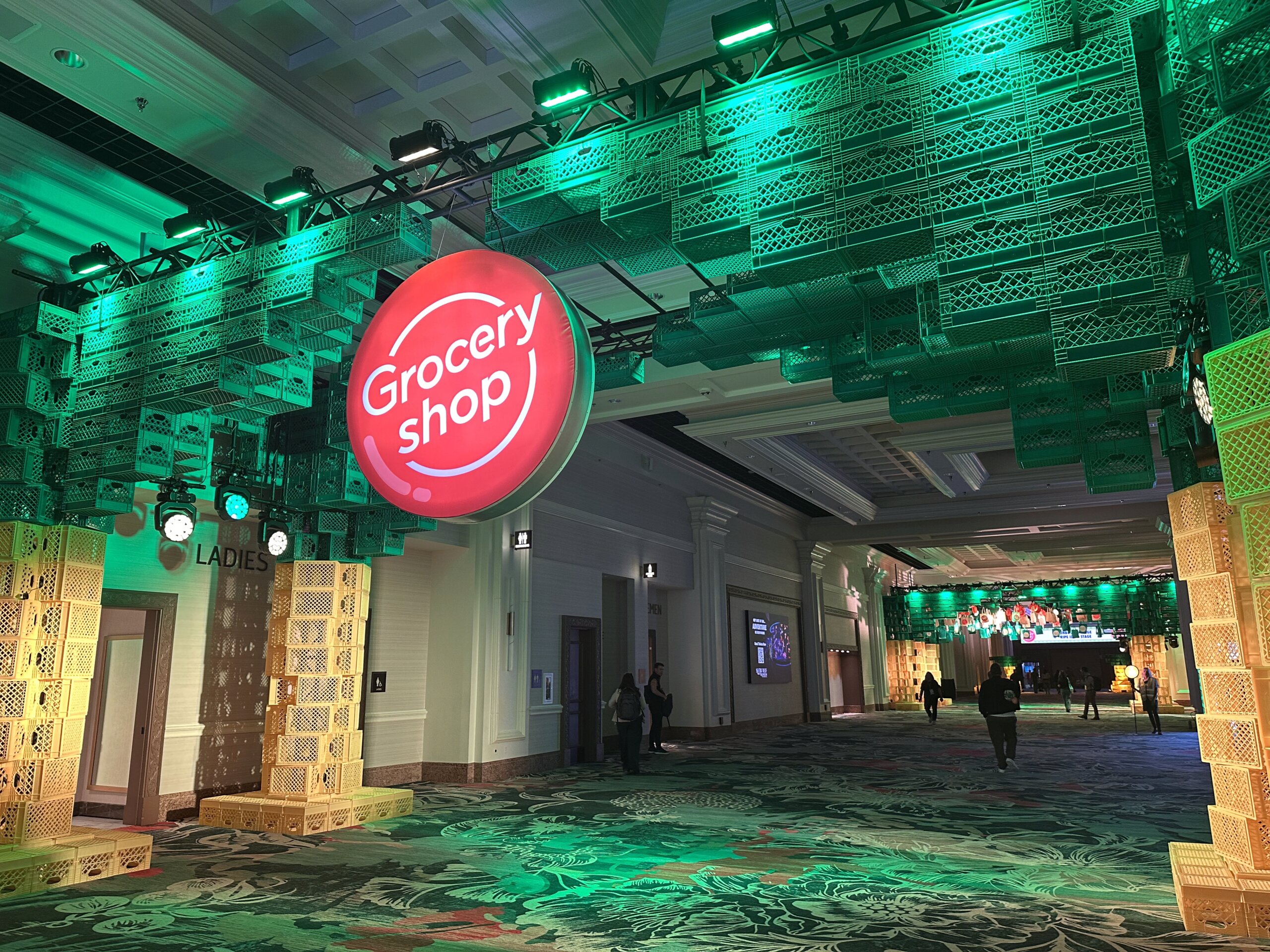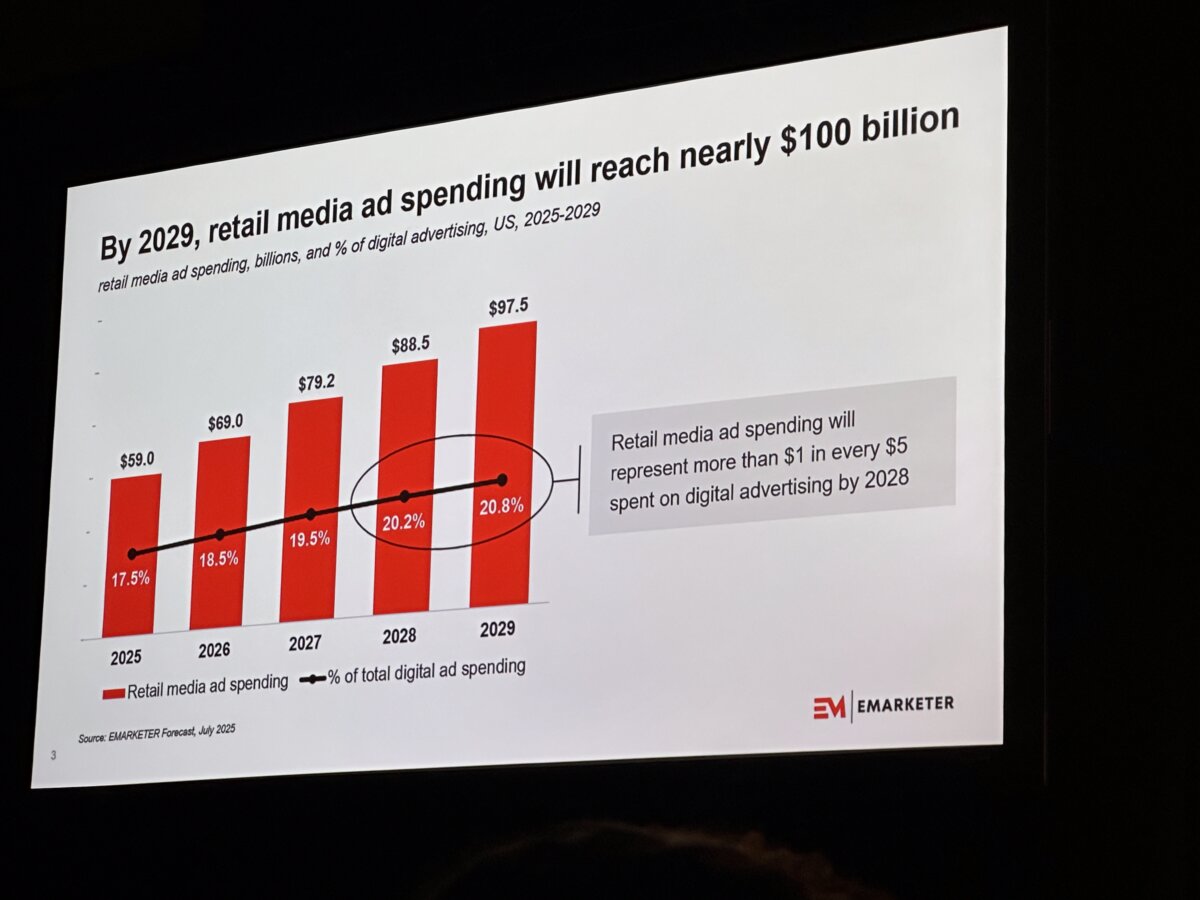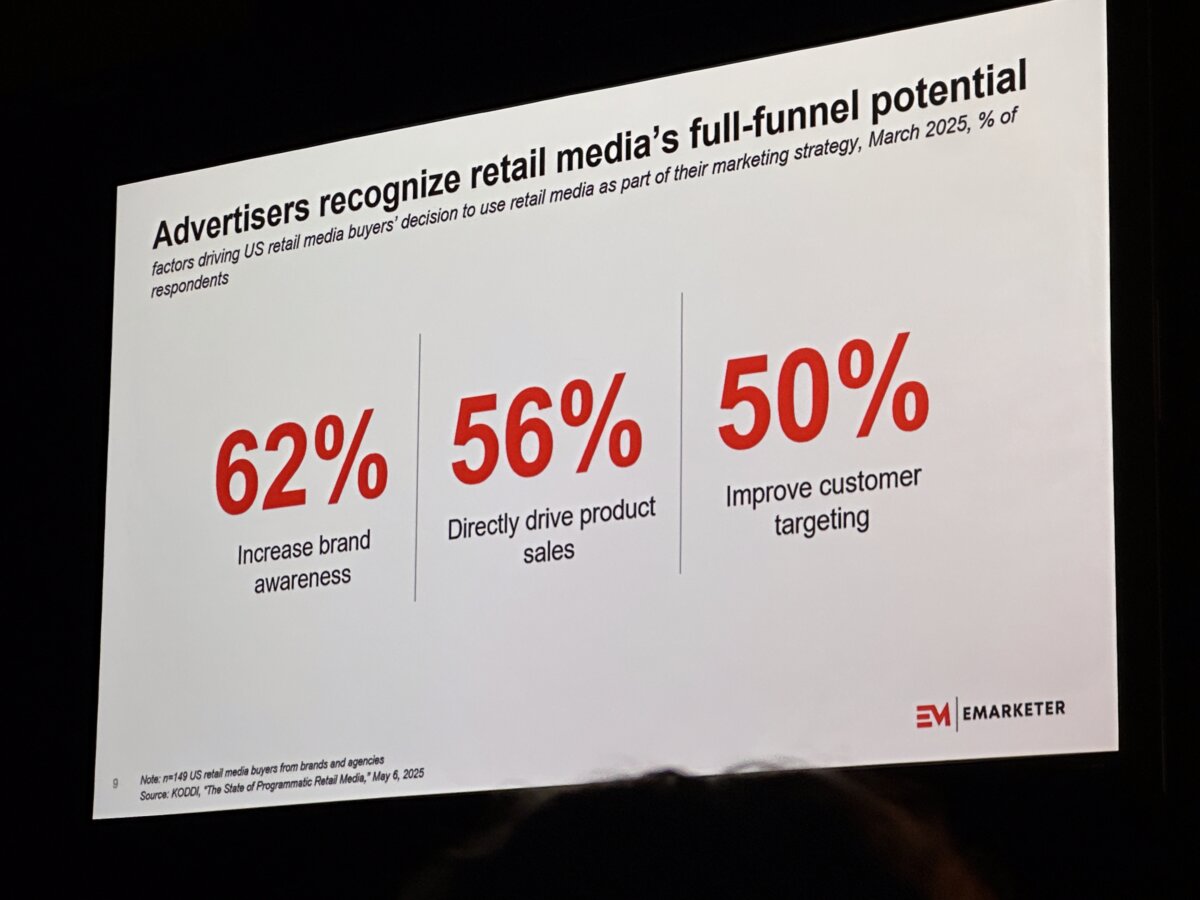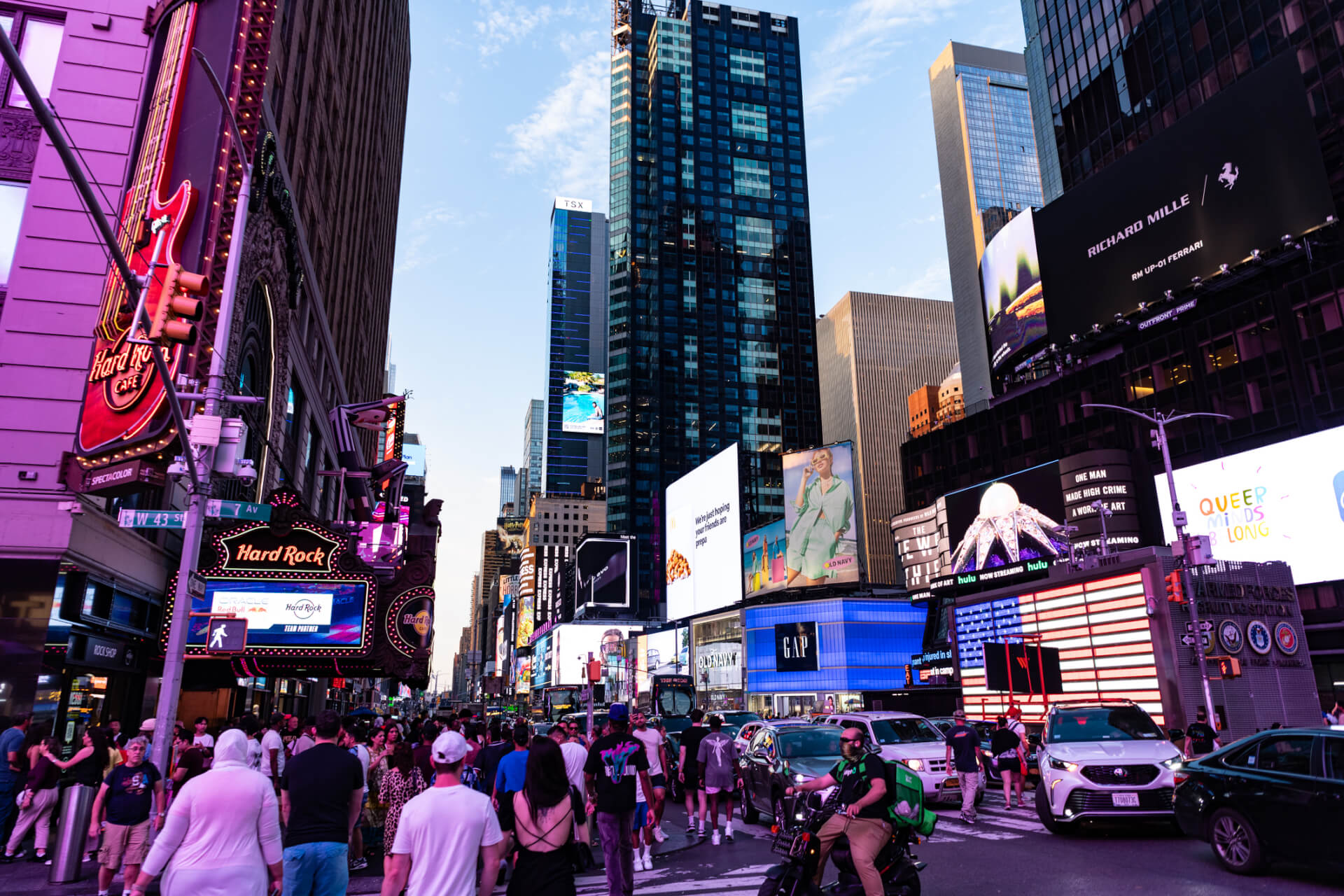| October 11, 2021
Retail Media In-Store Report: 4 key insights shaping RMN strategies in 2025
For retailers seeking fresh revenue streams, the next big play isn’t online: it’s in-store. As digital inventory becomes saturated and competition intensifies, forward-thinking players are expanding their retail media networks (RMNs) into the physical environment — where most purchases still happen — connecting digital and in-store touchpoints to influence shoppers at the exact moment of decision.
To better understand this shift, the Retail Media: In-Store Report 2025, authored by leading retail media expert Colin Lewis and produced in collaboration with Broadsign, examines how in-store channels are evolving, the commercial models shaping their growth, and the measurement advances helping to prove ROI.
The four takeaways below highlight some of the biggest insights from the report — from market momentum and technology adoption to omnichannel integration and the maturation of measurement. Together, they illustrate why in-store is poised to become the next frontier of retail media.
Key takeaways for retailers:
- In-store is the next growth frontier
- Screens and tech are redefining the store
- Omnichannel integration is key
- Campaign measurement and commercial models are maturing
Takeaway #1: In-store is the next growth frontier
While onsite and offsite channels still dominate retail media spend, in-store is fast emerging as the next growth driver. Globally, retail media is projected to reach $169.6 billion this year, surpassing TV ad revenue for the first time. Yet despite its relatively small share today, in-store retail media is on track to hit $1 billion by 2028 as retailers scale their digital capabilities and advertisers embrace the channel’s unique advantages.
Grocery chains may have pioneered the space, but they’re no longer alone. Today, other industries are developing their own retail media networks and using their physical presence to capitalize on this shift. With the right media capabilities and commercial strategy, the in-store opportunity stretches far beyond grocery to include sectors like petrol and convenience, shopping centres, hotels, and hospitality.
The appeal is clear: in-store combines mass reach in a high-attention environment with the ability to influence purchase decisions and drive real-time conversions at the shelf.
“In-store will begin to emerge as the new TV — a mass-reach advertising vehicle ideal for brands. Digital surfaces deliver what brands want and what linear TV has lost: fast reach, high attentiveness, younger audiences, and cultural relevance.”
— Andrew Lipsman, Media Ads and Commerce, Retail Media: In-Store Report 2025
For retailers, that makes in-store an invaluable extension of their RMN. By monetizing previously untapped foot traffic, they can unlock new revenue streams while strengthening omnichannel shopper engagement.
READ ALSO: Why in-store media is essential for forward-thinking retail media strategies
Takeaway #2: Screens and tech are redefining the store
At the heart of in-store retail media are digital screens — from large-format video walls to shelf-edge screens and point-of-purchase (POP) displays — delivering dynamic, data-driven campaigns right at the point of decision. These screens can adapt content based on time of day, weather, or even local shopping behaviours, helping brands capture attention and influence basket size in real time.
But screens are just the start. Retailers are experimenting with other technologies that add depth and interactivity to the shopper journey, including:
- Smart carts equipped with built-in displays
- QR codes that connect signage, demos, or packaging to digital content, loyalty apps, or online campaigns
- Interactive kiosks for product lookups, recipe ideas, or coupon printing
- AI-powered shelves that trigger promotions when stock runs low
- AR-enabled mirrors for virtual try-ons
- Bluetooth beacons that send personalized offers to shoppers’ phones
Traditional formats will also continue to play a role. Print signage, product sampling, and in-store audio remain effective ways to reach shoppers, but they’re being reimagined with digital elements layered in. For example, dynamic QR codes on posters, demo carts, or packaging can link to apps, loyalty perks, or campaign landing pages — turning otherwise static interactions into measurable, omnichannel experiences.
Leading retailers are already proving what’s possible. Tesco’s “Scan as You Shop” handheld devices double as ad platforms powered by loyalty data. Meanwhile, Walmart is ramping up in-store advertising through its 170,000 digital screens, store-wide radio network, and new weekend sampling stations. Advertisers can pair demo tables with QR codes that drive shoppers to online options, recipes, or seasonal content, while bundling campaigns across screens, audio, and physical activations to maximize the impact at the point of sale.
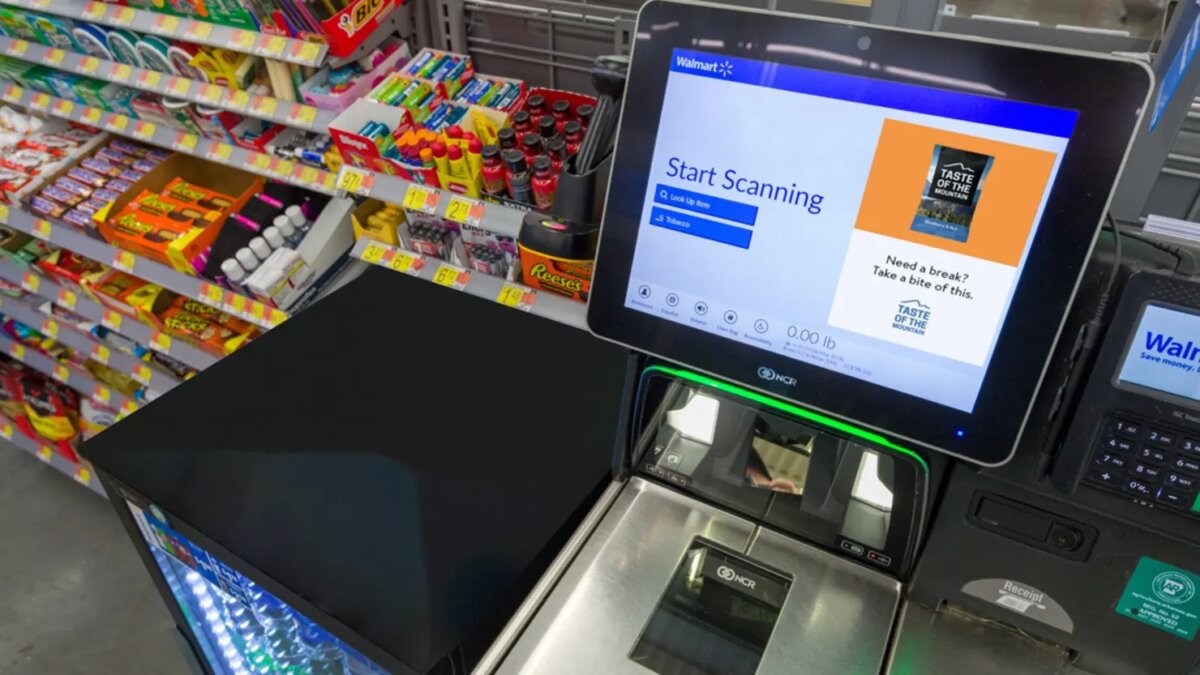
Together, these innovations are transforming physical stores into full-fledged digital media environments — and giving retailers a scalable foundation to grow their retail media networks beyond the confines of ecommerce.
Takeaway #3: Omnichannel integration is key
In-store media doesn’t exist in a vacuum — its real power comes when it’s connected with onsite and offsite channels as part of a seamlessly integrated RMN. When campaigns carry through from a retailer’s website or app into the physical store, brands can maintain consistent messaging and attribution across the full shopper journey, from brand awareness to purchase conversion.
In-store plays a role at every stage of the funnel:
- Awareness: Strategically placed signage, displays, and demos act as discovery tools, especially for impulse or unplanned purchases.
- Consideration: Interactive kiosks and QR codes surface reviews, ratings, and tutorials to help customers evaluate products.
- Conversion: Digital displays, shelf talkers, and personalized mobile app push notifications can close the deal by offering time-sensitive promotions, bundling offers, or reminders of loyalty benefits.
Strategic integration makes these moments even more powerful. As consumers move fluidly between online browsing, mobile researching, and physical shopping, in-store media becomes a central node for narrative and experiential cohesion:
- On-site integration: Link in-store media to shopper data from ecommerce sites, apps, and loyalty programs to bridge physical and digital experiences. Integration can also flow the other way, extending in-store inventory visibility into online ads — surfacing an “Available now in your local store!” message when browsing online — or using digital receipts to deliver post-purchase content, cross-sells, and offers.
- Offsite integration: Connect in-store campaigns with offsite media like social, search, and CTV to drive store visits and purchases. Geotargeted programmatic ads can be timed with in-store launches, while influencer content and localized social ads guide shoppers into physical stores.
Real-world examples show how this works in practice. Tesco has piloted dynamic shelf-edge screens that adjust pricing and promotions in real time based on stock levels, time of day, or shopper profile. And Sephora has reimagined the beauty aisle with digital touchpoints that bring product reviews and tutorials into the store, most notably through its “Store of the Future” pilots in Asia, which blend interactive displays with personalized consultations to create a seamless digital-physical shopping experience.
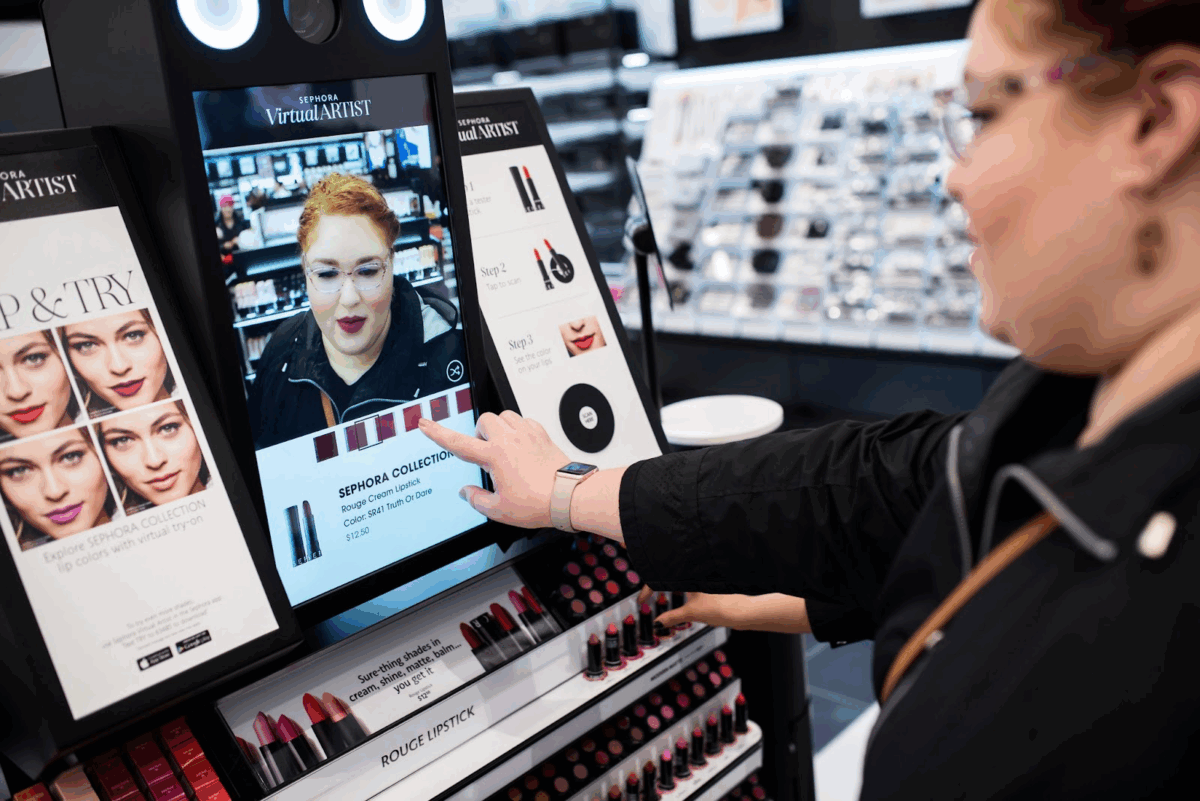
READ ALSO: How to integrate in-store digital signage into your retail media network
Takeaway #4: Campaign measurement and commercial models are maturing
As retail media matures, advertisers expect the same accountability they’re used to from digital channels. It’s no longer enough to simply sell screen space — brands want evidence that in-store activations drive measurable results. For retailers, delivering credible, transparent measurement is essential to building trust and attracting repeat ad spend.
Industry-wide standards are starting to take shape. To bring more consistency and instill brands with greater confidence in directing marketing spend toward in-store campaigns, the Interactive Advertising Bureau (IAB) has introduced a set of standards that aim to provide unified definitions, measurement guidelines, and best practices for in-store retail media. While full standardization is still a work in progress, retailers don’t have to wait to start building credibility with advertisers.
While in-store retail media measurement is still developing, many best practices build on established digital out-of-home (DOOH) approaches. For a deeper dive into methodologies, see our guides on DOOH metrics, ROI measurement, and attribution.
At the same time, commercial models are evolving to meet different advertiser and campaign needs. In-store retail media is borrowing from digital and out-of-home playbooks but adapting them for the physical retail environment, where placements span digital screens, audio systems, shelf displays, and experiential zones.
The choice of model shapes not only ROI for brands but also how retailers monetize their networks and structure long-term growth, with several common approaches taking shape:
- CPM (cost per thousand impressions): Mirrors digital buying habits and works well for digital screens and audio, but relies on accurate impression tracking.
- Tenancy or fixed placement: Predictable pricing for high-traffic placements or seasonal pushes, though less performance-driven.
- Hybrid approaches: Blend fixed fees with added value like co-marketing, shopper insights, or data access.
- Performance-based models: Tie costs directly to outcomes such as sales lift, with risk and reward shared between retailer and brand.
- Sponsorships and experiential packages: High-impact brand-building plays, often tied to events or seasonal themes.
Each model suits different situations: new entrants may lean on performance-based or fixed-fee options to minimize risk, established CPGs often prefer tenancy or CPM for reliable visibility at scale, and premium or lifestyle brands may invest in sponsorships to build emotional resonance. However, the broader trend across the industry is toward hybrid models that pair fixed costs with measurable outcomes, supported by richer data and more sophisticated retail media networks.
Start building your in-store retail media strategy
In-store retail media may have trailed online in the past, but it’s catching up fast. With shoppers’ attention at its peak inside stores and new technologies making campaigns more measurable and scalable, the channel has quickly shifted from underutilized to essential. Put simply, if you haven’t invested in in-store solutions yet, you’re already falling behind.
For retailers, it’s a chance to unlock stronger RMN revenue growth while deepening omnichannel engagement. For brands, it’s an opportunity to reach consumers at the exact moment of purchase. And for the industry at large, it’s a sign that the future of retail media won’t just be online — it will be in-store.
Want to dive deeper? Explore the full Retail Media In-Store Report 2025 or check out Broadsign’s resources on building a scalable in-store retail media network that can support long-term growth.
